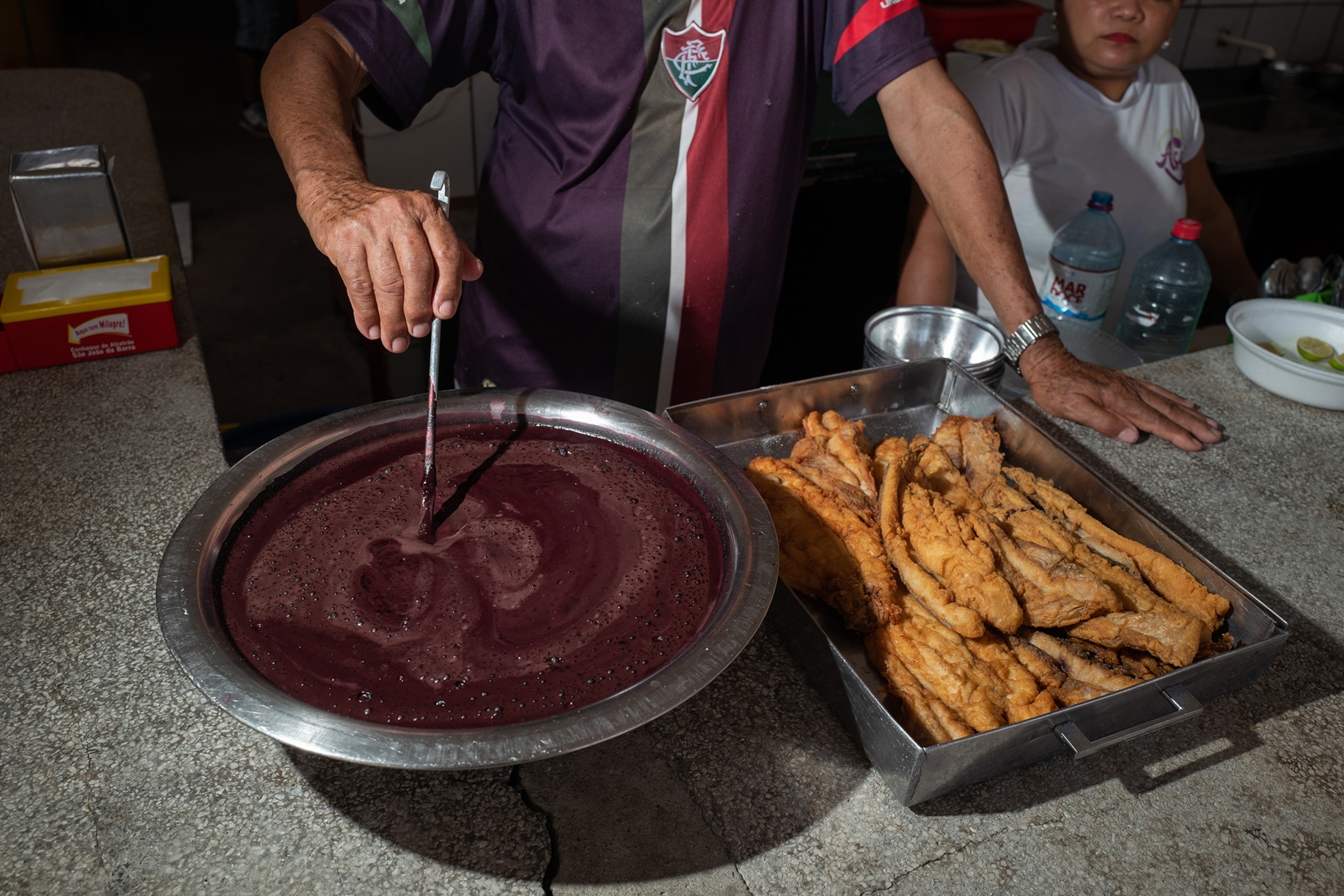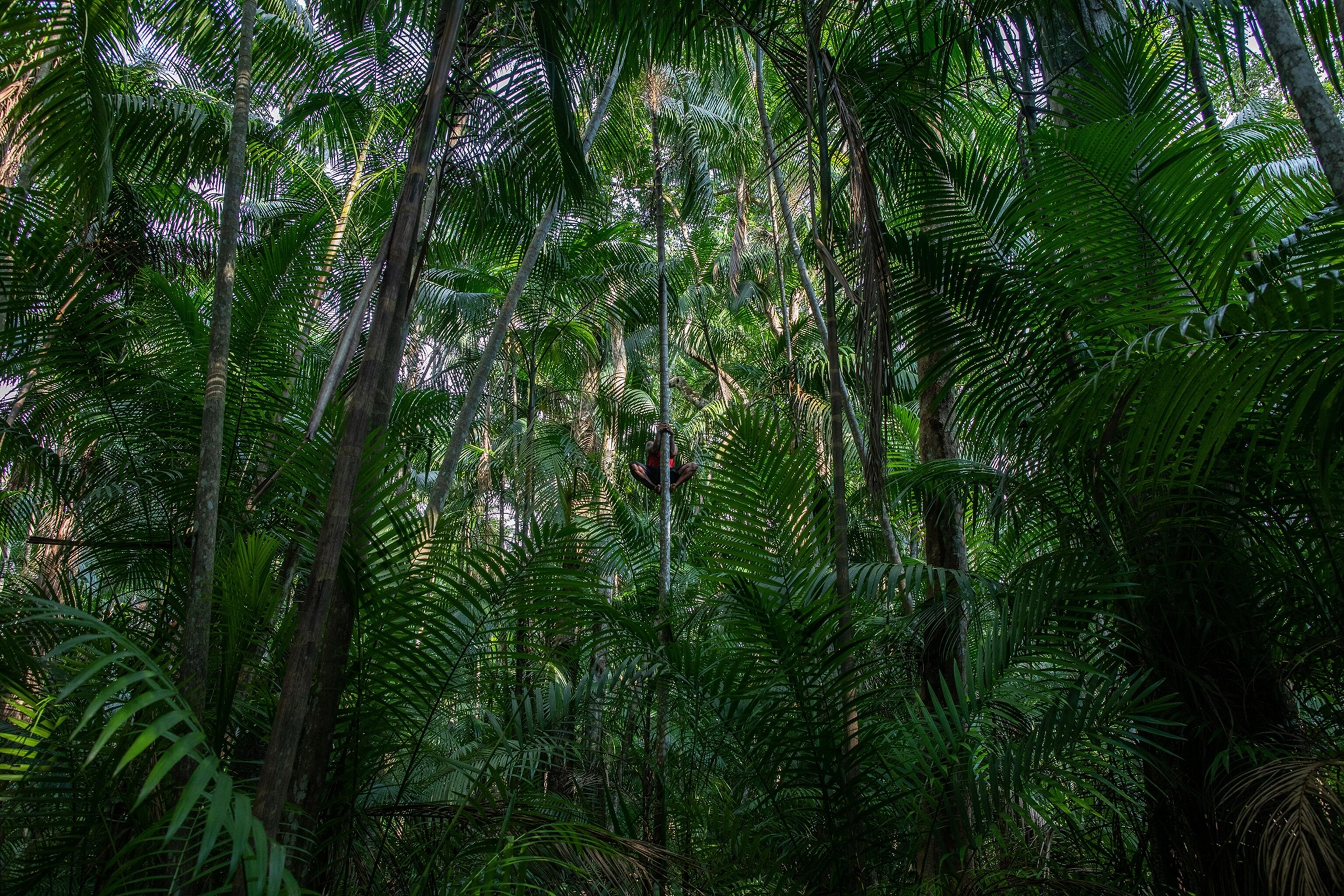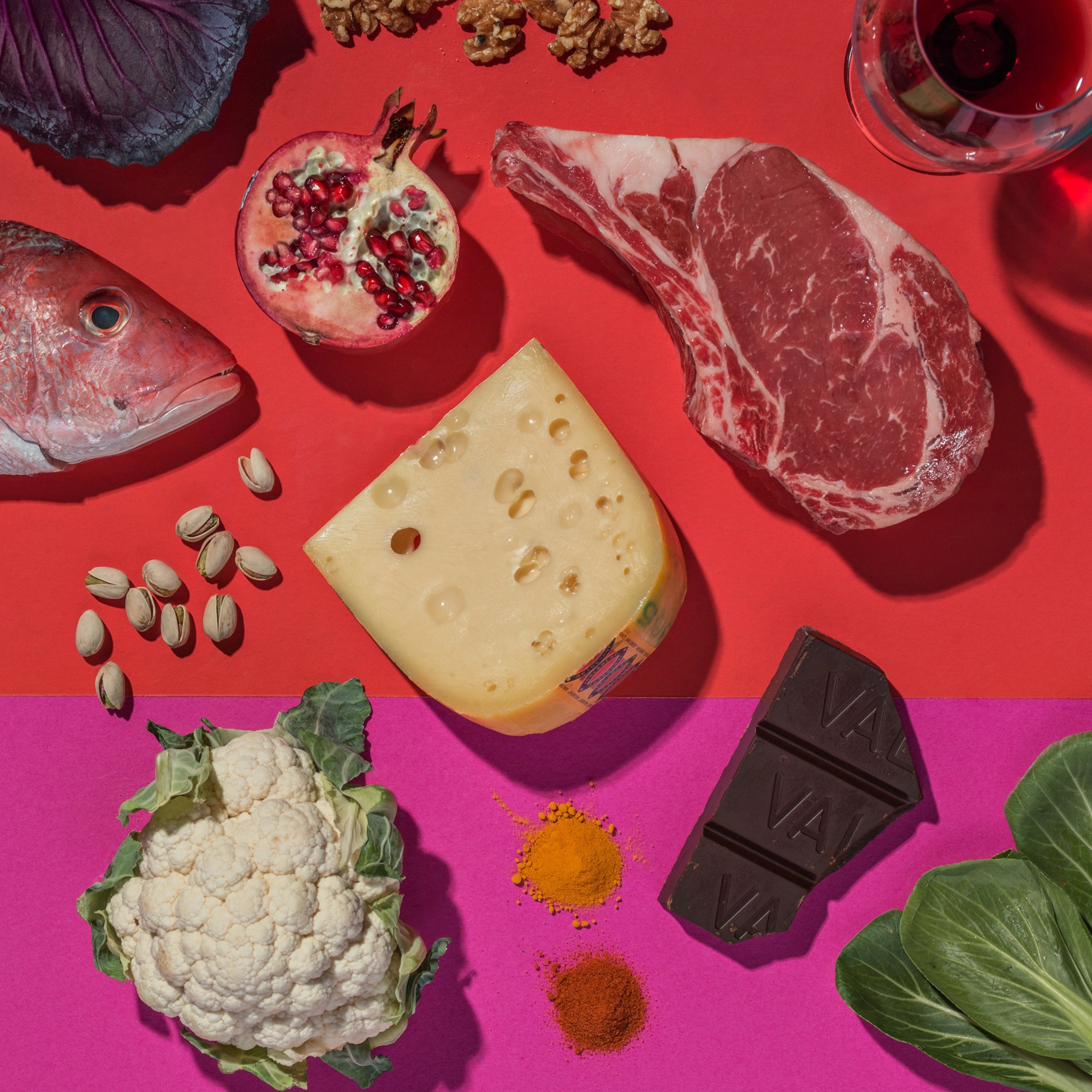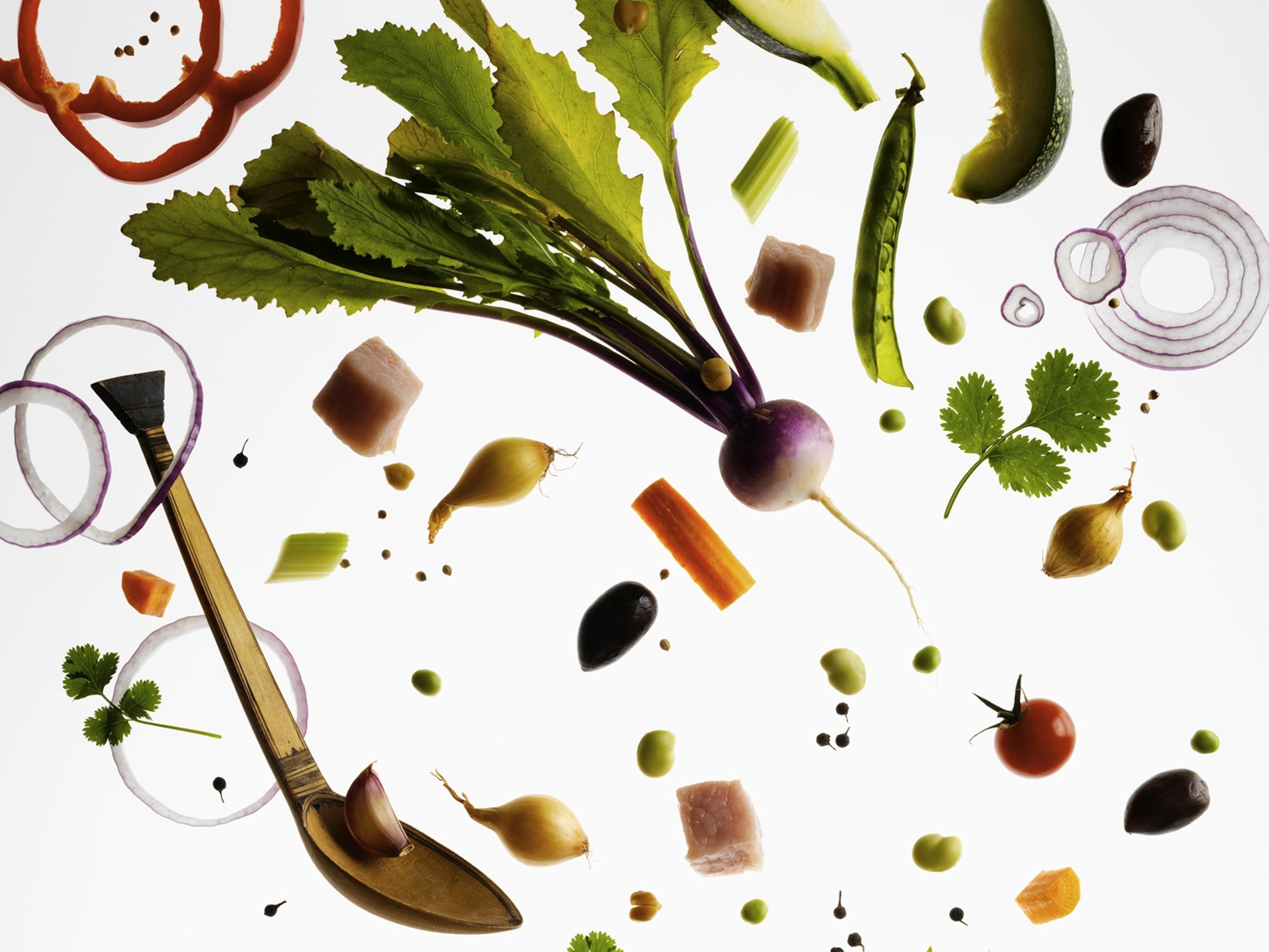
Your acai bowl has a hidden cost
Only 15 percent of this nutritious berry of the Brazilian Amazon ends up as food—much of the remainder ends up in waterways and landfills. Scientists are looking at innovative new uses for the leftovers.
Belém, Brazil — At first it was just a peculiar food of the Brazilian Amazon, a tiny berry yielding a thick purple pulp that locals adored spooning down with fried fish and manioc flour. Then, in the 2000s, acai was hailed a superfood, and began to spread worldwide as the main ingredient in smoothies, power bowls, and energy bars.
Acai exports from Brazil have risen more than 16,000 percent over the past decade, expanding in markets from the U.S. to Japan and Australia, according to FIEPA, the federation of industries in the Amazonian state of Pará.
All this was triggered by a surge of scientific interest in the 1990s, revealing the fruit is packed with fiber, healthy fats, vitamins, and antioxidants. But with the edible layer making up only around 15 percent of the nutritious berry, production is leaving tons of waste behind.
Every year, up to 550,000 tons of acai pits are created after the pulp is extracted from the seed—mostly in Pará, which accounts for 95 percent of the world’s production. Much of this byproduct is dumped into Amazonian landfills, forming actual mountains, or into rivers and streams, clogging the waterways. (Learn more about why the Amazon is under threat.)
“The residue is the main hurdle towards sustainable production,” says Lina Bufalino, a forest engineer in Belém, Pará’s capital, where sacks of acai pits pile up on sidewalks outside the shops of so-called “acai beaters," who soften the fruit to extract the pulp and supply the local markets. “It’s the weak link in the chain.”
Yet researchers working to reduce acai waste have discovered the residue can be added or made into a range of products, such as bioplastic bottles and bags; wooden boards for construction; charcoal; animal feed; fertilizer; water filters; and ingredients for the pharmaceutical, cosmetic, and food industries.
Early in 2024, Bufalino will kickstart the first cellulose lab in the Amazon, at the Federal Rural University of Amazonia, in Belém. Amazon Cell will develop various types of paper from acai fibers, mimicking processes used for processing eucalyptus trees. The plan is to start supplying paper for packaging locally, and gradually reach an industrial scale and enter national and international markets.


Solving two problems at once
Acai—pronounced ah-ssah-ee—is a blueberry-size fruit of the palm tree, Euterpe oleracea, which thrives in foodplain areas in the Amazon Basin. Its branches bear clusters of between 500 to 900 fruits, hanging up to 80 feet from the ground—making it risky for açaí pickers to climb the tree and access the fruit. The berry, which has one single seed, or pit, that makes up most of its size, is then soaked with water and processed in a machine to obtain a thick puree. The whole production chain employs almost 200,000 people and accounts for 2.5 percent of the state’s gross domestic product.
After processing, the pits that don’t end up in landfills or waterways go into industrial furnaces. Brazilian cement maker Votorantim burns 6,500 tons of acai seed in its furnaces monthly, replacing part of the petroleum coke—a carbon-rich material—needed for processing, which in turn reduces carbon emissions. (Read about powerful ways to fight climate change.)
Norwegian company Hydro, in a project with the Federal University of Pará, has started using the residue to fire up the boilers for its aluminum oxide refinery, Alunorte, in the city of Barcarena, close to Belém. The goal is to provide an industrial outlet for acai waste while reducing emissions in the facility, which converts bauxite into aluminum oxide, the main material used to produce aluminium. For now, it is consuming 130 tons of acai seed per day.
CBKK, a Brazilian venture company founded in 2020, is using the residue to make bioplastics, part of their effort to reduce plastic made from fossil fuels.
“When we saw the huge environmental problem generated by acai waste in and around Belém, we realized we could solve two problems at once,” says CBKK’s founder, Stefano Arnhold.
The company is now testing lids and bottles for cosmetics and drinks, as well as grocery store meat trays, with a shelf-life of just over a year, he says.
The material can be injected into the same kinds of molds used by the plastic industry, not requiring new equipment.

Hidden treasures
In 2014, when Ayla Sant’Ana da Silva, a biologist at the National Institute of Technology in Rio de Janeiro, decided to study acai byproducts, there were barely any studies on the subject. (Read about other popular Brazilian foods.)
She expected to find high levels of cellulose in the fruit’s pit. Instead, “to my surprise, it's very rich in mannan, a type of polysaccharide common in plants, but nowhere near the quantity present in acai,” she says.
While certain types of wood have up to 15 percent of mannan, this carbohydrate molecule is responsible for 50 percent of an acai seed’s weight.
Silva’s research developed ways to break down mannan into mannose, a valuable sugar with potential applications in the cosmetic, pharmaceutical, and food industries.
“Mannose is hardly used because it’s too expensive and hard to get. But if we produce it from a residue, which is abundant and has no value, that changes the picture,” she says.

Silva’s group has obtained a patent from the Brazilian government to convert mannan into mannose and to make it into a prebiotic called mannan oligosaccharide. She has another two patent requests lined up, and is also testing a tannin in the seed for its ability to fight off microbes and bacterial biofilms, which could be an ingredient in antibiotic topical creams.
“It’s amazing how many interesting things appeared in just 10 years. It makes me imagine the wealth of resources we have with the Amazon’s biodiversity, but simply don’t know of,” says Silva.
From paper to crayons
In 2014, after seeing acai waste on the streets of Belém, Bufalino transferred her focus from alternative uses for wood to finding sustainable solutions for acai residue.
“Acai drives the local economy without cutting down trees and provides food security for communities,” she says. “It became my favorite subject.”

Her experiments have shown that acai seeds can be used to make paper; food packaging; charcoal; and biochar, a form of charcoal used to treat soils. When the residue is burnt in furnaces to generate power, her group found that the remaining ashes can still be turned into biodegradable crayons, which she’s submitted for a patent; or micro-silica, used to improve strength and durability in concrete construction. (Learn about efforts to farm the Amazon sustainably.)
If her Amazon Cell project is successful, she says the sky is the limit for acai seeds’ uses.
“My hope is to prove that acai residue has industrial value, so that it can be used in large volumes and stop polluting the environment.”
You May Also Like
Go Further
Animals
- Orangutan seen using plants to heal wound for first timeOrangutan seen using plants to heal wound for first time
- What La Palma's 'lava tubes' tell us about life on other planetsWhat La Palma's 'lava tubes' tell us about life on other planets
- This fungus turns cicadas into zombies who procreate—then dieThis fungus turns cicadas into zombies who procreate—then die
- How can we protect grizzlies from their biggest threat—trains?How can we protect grizzlies from their biggest threat—trains?
Environment
- What La Palma's 'lava tubes' tell us about life on other planetsWhat La Palma's 'lava tubes' tell us about life on other planets
- How fungi form ‘fairy rings’ and inspire superstitionsHow fungi form ‘fairy rings’ and inspire superstitions
- Your favorite foods may not taste the same in the future. Here's why.Your favorite foods may not taste the same in the future. Here's why.
- Are the Great Lakes the key to solving America’s emissions conundrum?Are the Great Lakes the key to solving America’s emissions conundrum?
- The world’s historic sites face climate change. Can Petra lead the way?The world’s historic sites face climate change. Can Petra lead the way?
History & Culture
- Meet the ruthless king who unified the Kingdom of Hawai'iMeet the ruthless king who unified the Kingdom of Hawai'i
- Hawaii's Lei Day is about so much more than flowersHawaii's Lei Day is about so much more than flowers
- When treasure hunters find artifacts, who gets to keep them?When treasure hunters find artifacts, who gets to keep them?
Science
- Why ovaries are so crucial to women’s health and longevityWhy ovaries are so crucial to women’s health and longevity
- Orangutan seen using plants to heal wound for first timeOrangutan seen using plants to heal wound for first time
Travel
- 5 of Uganda’s most magnificent national parks
- Paid Content
5 of Uganda’s most magnificent national parks - On this Croatian peninsula, traditions are securing locals' futuresOn this Croatian peninsula, traditions are securing locals' futures
- Are Italy's 'problem bears' a danger to travellers?Are Italy's 'problem bears' a danger to travellers?







